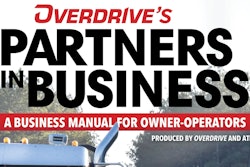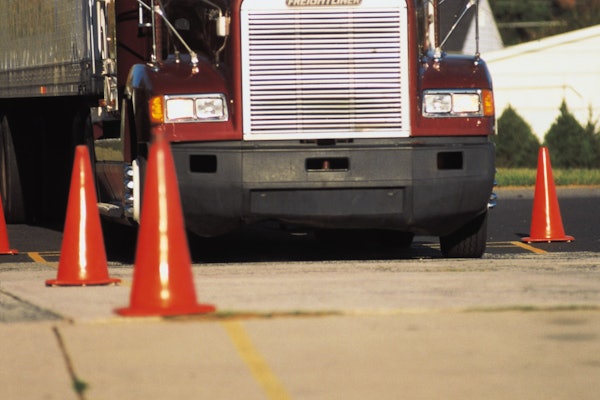In 2024, finally, as regular Overdrive readers will know, owner-operator income was up on a year-over-year basis. ATBS Vice President Mike Hosted makes that abundantly clear in this week's edition of Overdrive Radio, featuring the business services firm's March 25 update offering an economic outlook for the year ahead, as well as lessons within the benchmarking data ATBS derives from its tens of thousands of owner-operator clients' performance. (If you missed our report from the session as MATS got under way, find it via this link.)
The slight boost in average owner-operator income is certainly a first in what’s been an exceedingly tough three and more years now as freight demand’s declined, revenues and income falling for many owner-operators as costs just rose through much of the period. The 2024 income gain also comes despite even further rates and revenue declines last year, a sure sign that successful owners are tightening their operation, increasing fuel efficiency to reduce costs as much as possible.
[Related: Controlling fuel costs, improving efficiency critical for any owner-operator's survival]
Today in the podcast, we essentially let the tape roll on Hosted’s presentation. You can follow along by downloading Hosted’s slides via this link, or watch the Youtube version up top or on Overdrive's Youtube channel to listen along with the presentation of the slides after my intro.

Download all the slides from Hosted's presentation via this link.
 Overdrive Radio's sponsor is Howes, longtime provider of fuel treatments like its Howes Diesel Defender all-weather mileage booster and winter anti-gel treatements to get you through the coldest temps, the Howes Multipurpose penetrating oil, and other products.
Overdrive Radio's sponsor is Howes, longtime provider of fuel treatments like its Howes Diesel Defender all-weather mileage booster and winter anti-gel treatements to get you through the coldest temps, the Howes Multipurpose penetrating oil, and other products.
[Related: How much of the freight surge has come courtesy of expected tariffs?]
As of March 25 when Hosted gave the presentation, the spot market broadly had gained about 18 cents/mile in terms of a true rate, minus an estimated surcharge. "This is a really encouraging sign that there's more freight to be hauled," he said, "and not only that but the rates are trailing up behind it."
 Spot freight volumes continued to strengthen last week (see bars on the graph), likewise for rates. FTR and Truckstop in their weekly report with this graph reported Monday, April 7, the jury was still out on how much of the upward movement in indices was due to anticipatory import traffic.Truckstop/FTR
Spot freight volumes continued to strengthen last week (see bars on the graph), likewise for rates. FTR and Truckstop in their weekly report with this graph reported Monday, April 7, the jury was still out on how much of the upward movement in indices was due to anticipatory import traffic.Truckstop/FTR
Time will tell if it lasts. Conditions all around don’t suggest any new obvious strategies on the cost front. Keep tightening the belts there, for sure, but don’t close your eyes to new opportunities that could arise.
Recent trucking market performance brings to mind Gary Buchs’ advice around freight, around customer identification and the time to strike, likewise when some measure of a kickstart might truly arise. It came back in late September, before elections’ outcomes were known, and following the Fed’s moves to begin to ease off the cost of borrowing with interest rate cuts.
[Related: When will freight markets turn? Part 2, Building business for trucking's down cycles]
Buchs advised to set a calendar reminder for 4-6 months out from the time of the Fed's cuts. “Odds are,” he said, “that is about the time business will change, as it takes time for companies to have confidence" to place orders, others to respond to those orders with their own confidence, "and the cards begin to fall and make things move....”
Here we are, four-to-six months on. Looking at the stock market since the Trump tariff announcement last week, we can’t say business confidence is 100% the rule. Yet flatbed freight’s been moving up, as noted, and a couple weeks back dry and reefer rates and volumes finally joined in. Maybe Buchs was right on the timing. And maybe in the freight economy, things are in fact changing for the better.
Again, time will tell. If you missed ATBS's original presentation, sit in on the update for plenty more insight with this week's Overdrive Radio:












